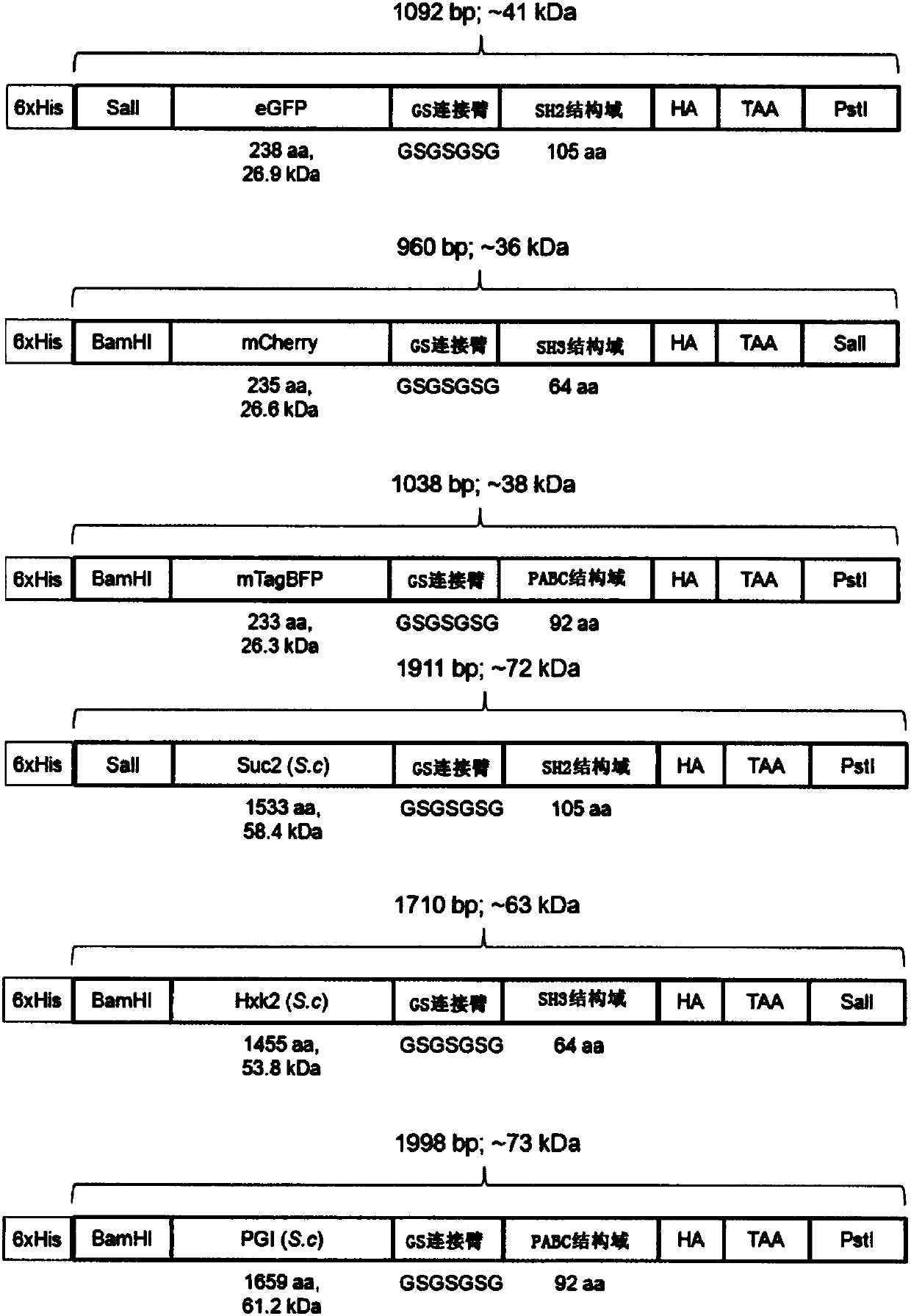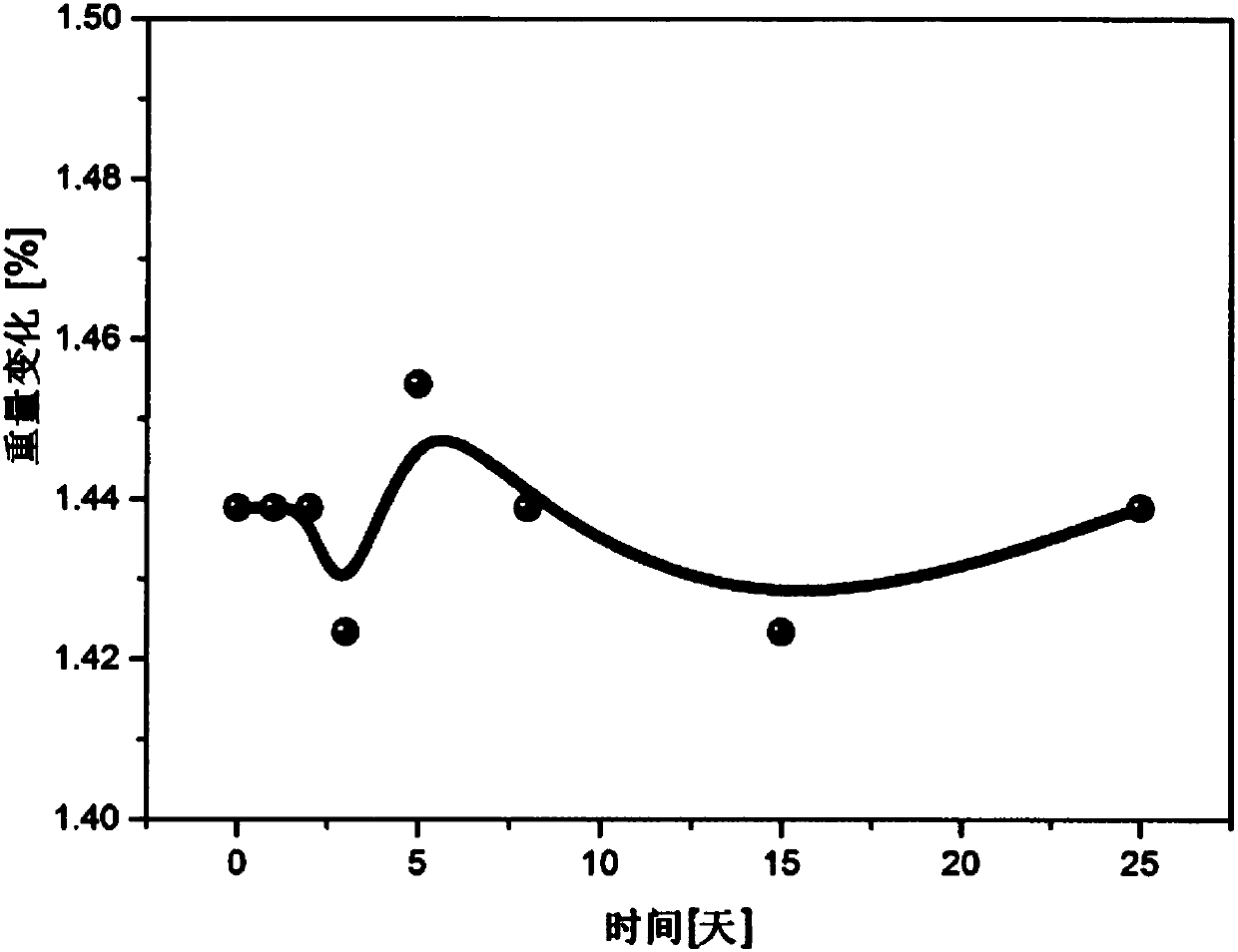Rubber-like material for the immobilization of proteins and its use in lighting diagnosis and biocatalysis
A rubber-like, protein-based technology used in biochemical equipment and methods, microbial assay/inspection, luminescent materials, etc.
- Summary
- Abstract
- Description
- Claims
- Application Information
AI Technical Summary
Problems solved by technology
Method used
Image
Examples
Embodiment 1
[0341] Example 1 : Preparation of Rubber-like Materials Containing Immobilized Proteins
[0342] Preparation of proteins and enzymes (expression and purification of recombinant proteins)
[0343] Such as figure 1As shown, several different photoproteins and enzymes were prepared and characterized. Escherichia coli (E.coli) strain M15[pREP4] carrying the appropriate plasmid (both pQE-9 expression constructs containing the N-terminal 6xHis tag from the pQE-9 expression vector, Qiagen) was incubated at 28°C in the presence of Amp (200 μg / ml) and Kan (100 μg / ml) antibiotics grown in LB medium to an optical density at 600 nm of about 0.5. Recombinant protein expression was induced using 1 mM isopropyl-β-D-1-thiogalactoside at 28°C. After 4 hours of growth at 28°C, cells were harvested and frozen at -20°C. Frozen bacterial cells were thawed and lysed chemically using lysozyme and mechanically using a sonicator. Then, following the QIAGEN protocol (Henco K, A handbook for hi...
Embodiment 2
[0357] Example 2 : Preparation of rubber-like materials using different mass ratios of branched polymers and linear polymers and different amounts of buffered aqueous solutions
[0358] The preparation of gels and rubber-like materials according to the present invention uses different mass ratios of branched polymers (in this example, M n 450 Da ethoxylated trimethylolpropane (TMPE)) and linear polymers (in this example, M n 5000 kDa polyethylene oxide (PEO)), as shown in Table 1 and Table 2 below. Rubber formation was performed as described in Example 1.
[0359] Specifically, the above two polymers were mixed in different mass ratios as shown in Table 1 and Table 2 below. Although TMPE is a low-viscosity liquid, PEO does not dissolve even under high-speed stirring conditions. To facilitate this process, different amounts of buffer (again for proteins) were added.
[0360] Table 1:
[0361]
[0362] Table 2:
[0363]
[0364]As summarized in Table 1, until 200 µ...
Embodiment 3
[0369] Example 3: Applications of rubber-like materials containing immobilized proteins as downconversion encapsulation systems
[0370] Figure 5 A schematic diagram showing a hybrid light-emitting diode with a rubber-like material containing immobilized proteins therein as a down-converting packaging system (see Example 1). A commercially available blue emitting LED with an electroluminescence spectrum at 450 nm (from Luxeon) was used in this example. To coat the previous silicone encapsulation in three-dimensional form, the LED can either be immersed in the gel for a few seconds and / or the gel can be deposited by drop coating onto the surface of the carrier. Subsequently, the coating was dried as described in Example 1 above. Devices were driven under constant and / or pulsed current and voltage regimes. In this example, a Keithley 2400 was used to drive the LED at a constant current of 10 mA, and the electroluminescence spectrum and device performance was monitored usin...
PUM
| Property | Measurement | Unit |
|---|---|---|
| number average molecular weight | aaaaa | aaaaa |
| number average molecular weight | aaaaa | aaaaa |
| number average molecular weight | aaaaa | aaaaa |
Abstract
Description
Claims
Application Information
 Login to View More
Login to View More - R&D
- Intellectual Property
- Life Sciences
- Materials
- Tech Scout
- Unparalleled Data Quality
- Higher Quality Content
- 60% Fewer Hallucinations
Browse by: Latest US Patents, China's latest patents, Technical Efficacy Thesaurus, Application Domain, Technology Topic, Popular Technical Reports.
© 2025 PatSnap. All rights reserved.Legal|Privacy policy|Modern Slavery Act Transparency Statement|Sitemap|About US| Contact US: help@patsnap.com



